SKIL Belt Sander
If you’re a woodworking enthusiast, DIY hobbyist, or professional craftsman, you know the importance of having the right tools to get the job done quickly and efficiently. One such indispensable tool is a belt sander. Among the many brands available in the market, the SKIL belt sander stands out for its reliability, power, and user-friendly design.
SKIL Belt Sander: The Ultimate Guide to Power, Precision, and Performance
If you’re a woodworking enthusiast, DIY hobbyist, or professional craftsman, you know the importance of having the right tools to get the job done quickly and efficiently. One such indispensable tool is a belt sander. Among the many brands available in the market, the SKIL belt sander stands out for its reliability, power, and user-friendly design.
In this comprehensive guide, we’ll explore everything you need to know about SKIL belt sanders—from features and benefits to how to choose the best model for your needs. Whether you are sanding large wooden surfaces, refinishing furniture, or smoothing rough edges, the SKIL belt sander is designed to deliver excellent results every time.
What Is a Belt Sander?
Before diving into the specifics of the SKIL belt sander, let’s first understand what a belt sander is and why it is a valuable tool in woodworking.
A belt sander is a power tool equipped with a continuous loop of sandpaper—called the sanding belt—that rotates around two drums. This design allows for aggressive material removal, making belt sanders perfect for smoothing rough surfaces, shaping wood, or preparing surfaces for finishing.
Key uses of a belt sander include:
-
Removing paint or varnish
-
Leveling uneven surfaces
-
Preparing wood for staining or painting
-
Smoothing edges and corners
-
Shaping large wooden pieces quickly
Why Choose a SKIL Belt Sander?
SKIL has been a trusted name in the power tool industry for decades. Known for producing durable, innovative, and affordable tools, SKIL offers belt sanders that combine power with precision. Here are some reasons why SKIL belt sanders are highly recommended:
1. Powerful Motors
SKIL belt sanders come with robust motors ranging from 6 to 10 amps (depending on the model), capable of delivering high sanding speeds. This means you can tackle tough sanding jobs quickly without bogging down the tool.
2. Variable Speed Control
Many SKIL belt sanders feature variable speed control, allowing users to adjust the sanding speed to match the material and application. This is essential for preventing damage to delicate surfaces or for increasing speed on tougher materials.
3. Ergonomic Design
Comfort matters when using power tools for extended periods. SKIL belt sanders are designed with ergonomic handles, rubber grips, and balanced weight distribution to reduce user fatigue.
4. Dust Collection System
Dust management is crucial for both clean workspaces and user health. SKIL models often include integrated dust bags or ports for connecting to vacuum systems, effectively reducing airborne dust.
5. Durable Construction
Built with quality materials, SKIL belt sanders are designed to withstand regular use in demanding environments, making them a reliable tool for professionals and hobbyists alike.
Popular SKIL Belt Sander Models
SKIL 7510-01 6-Amp 3 x 21-Inch Belt Sander
This is one of the most popular SKIL belt sanders on the market. It offers a 6-amp motor with a sanding speed of 820 feet per minute, suitable for a wide range of sanding tasks.
-
Pros: Lightweight, easy to handle, comes with a dust bag.
-
Cons: Basic model without variable speed.
Ideal for homeowners and DIYers who need a reliable, affordable sander.
SKIL 7881-01 8.5-Amp 3 x 21-Inch Variable Speed Belt Sander
The 7881-01 model is a step up, featuring a variable speed motor from 850 to 1,450 feet per minute.
-
Pros: Variable speed, dust bag included, ergonomic handle.
-
Cons: Slightly heavier.
Perfect for more demanding jobs and users who want more control over sanding speed.
SKIL 7801-01 7.5-Amp 3 x 18-Inch Belt Sander
This mid-range sander has a compact 18-inch belt, ideal for smaller projects or tight spaces.
-
Pros: Compact size, powerful motor, dust collection system.
-
Cons: Smaller belt size limits coverage area.
Great for finishing work or small woodworking tasks.
Key Features to Look for in a SKIL Belt Sander
When choosing a SKIL belt sander, consider these essential features:
Motor Power
Measured in amps, motor power determines the sander’s efficiency and ability to handle tough jobs. For heavy-duty sanding, look for at least a 7-amp motor. For light to medium tasks, 6 amps will suffice.
Belt Size
The most common belt size is 3 x 21 inches. Larger belts cover more surface area, speeding up the sanding process. Smaller belts, like 3 x 18 inches, offer better control for detailed work.
Variable Speed Control
Variable speed allows you to adjust the sanding speed for different materials, giving you precision and preventing damage.
Dust Collection
Check if the model includes an effective dust bag or vacuum port. A good dust collection system keeps your workspace clean and protects your lungs.
Weight and Ergonomics
Since sanding requires consistent pressure and movement, choose a sander that feels comfortable in your hands and isn’t too heavy.
How to Use a SKIL Belt Sander Safely and Effectively
Using a belt sander correctly not only ensures quality results but also prolongs the life of your tool and keeps you safe.
Step 1: Prepare Your Workspace
-
Wear protective gear: goggles, dust mask, and hearing protection.
-
Ensure your workpiece is securely clamped.
-
Clear the area of flammable materials.
Step 2: Inspect the Sander
-
Check the sanding belt for wear and replace if necessary.
-
Confirm the dust bag or vacuum attachment is properly connected.
Step 3: Start Sanding
-
Turn on the sander and let it reach full speed.
-
Place the sander flat on the surface before applying pressure.
-
Move the sander in the direction of the wood grain.
-
Use steady, even strokes—avoid staying too long in one spot to prevent gouges.
Step 4: Clean Up
-
Turn off the sander and unplug it.
-
Empty the dust bag or vacuum debris.
-
Inspect the sanding belt and replace if worn.
Maintenance Tips for Your SKIL Belt Sander
To keep your SKIL belt sander in optimal condition:
-
Regularly check the sanding belts and replace them when worn out.
-
Clean dust ports and the motor housing to prevent clogging.
-
Lubricate moving parts as recommended in the user manual.
-
Store the sander in a dry place to avoid rust and damage.
SKIL Belt Sander Accessories
Enhance your sanding experience with these useful accessories:
-
Replacement sanding belts: Available in various grits for different finishes.
-
Dust extraction attachments: For connecting to shop vacuums.
-
Sanding belt cleaner: Extends the life of your sanding belts by removing clogging debris.
-
Work gloves and protective gear: Safety should always come first.
SKIL Belt Sander vs. Competitors
How does SKIL stack up against other popular belt sander brands like Bosch, Makita, and DeWalt?
-
Price: SKIL generally offers more affordable options without compromising quality.
-
Performance: While Bosch and Makita might have slightly more powerful models, SKIL’s belt sanders provide ample power for most users.
-
User-friendly design: SKIL’s ergonomic features make it easier for beginners and DIYers.
-
Durability: SKIL tools are built to last, suitable for both casual and professional use.
Frequently Asked Questions (FAQs)
Q1: Can a SKIL belt sander be used on metal?
While primarily designed for wood, SKIL belt sanders can be used on metal surfaces for deburring or rust removal if equipped with the proper sanding belts made for metal. However, always check the tool’s specifications and safety guidelines before doing so.
Q2: How often should I replace the sanding belt?
It depends on the intensity and frequency of use. Signs that indicate replacement include a loss of abrasive grit, tears, or frequent slipping.
Q3: Is a belt sander suitable for finishing work?
Belt sanders are more aggressive and remove material quickly, so they’re typically used for initial sanding and shaping rather than fine finishing. For smooth finishing, consider using a palm sander or orbital sander after the belt sander.
Q4: What grit sanding belts work best with SKIL belt sanders?
For heavy material removal, start with coarse grits (40-60). For smoothing and preparing surfaces for finishing, switch to medium (80-120) and fine grits (150+).
Where to Buy SKIL Belt Sanders
You can purchase SKIL belt sanders from various retailers:
-
Amazon: Wide selection, customer reviews, and fast shipping.
-
Home improvement stores: Lowe’s, Home Depot, and Ace Hardware.
-
Official SKIL website: Offers the latest models and warranty info.
-

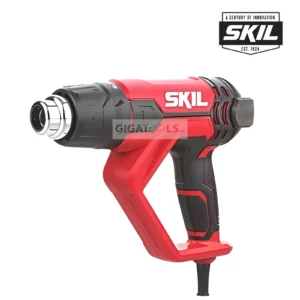
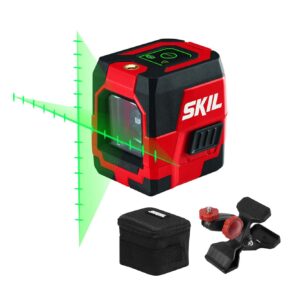
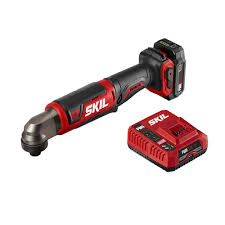
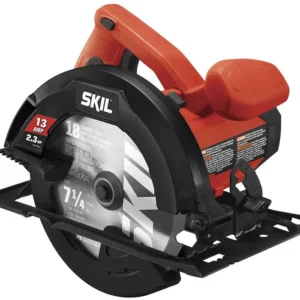
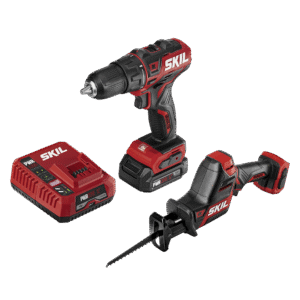
There are no reviews yet.